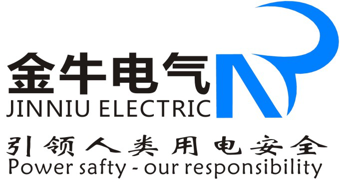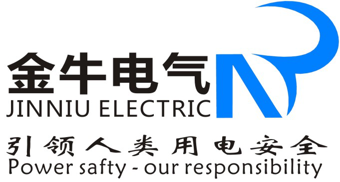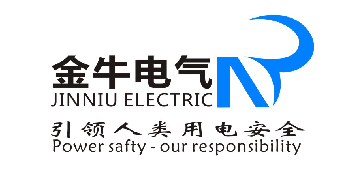
If there is a stage for lightning strike
I. bronze thunder
Dark clouds, lightning and thunder,
A beam of bronze lightning struck the power line,
I saw a cold light on the road,
As a result, due to lack of energy,
Unable to break through the insulation defense of the line,
Come back in vain and go home bitterly!
Conclusion:
Transmission line: right here?
II. Silver thunder
Dark clouds, lightning and thunder,
A beam of silver lightning struck the power line,
I saw a cold light on the road,
Lightning energy is very large,
Broke through the insulator's defense,
Cause insulator string flashover,
Explanation of terms
Flashover: flashover refers to the phenomenon of discharge along the surface of solid insulator when the gas or liquid dielectric around the solid insulator is broken down.
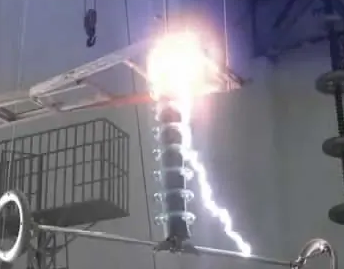
However, due to the lack of energy of silver mine,
After the first round of skills were released, the subsequent skills were not connected,
Insulator strings made a comeback and recaptured the position.
The arc was instantly cut off.
Because the time is very short and the energy is small,
This attack is still within the threshold of the power system,
No impact on the power system,
Therefore, the relay protection system did not act.
However, the insulator is damaged to a certain extent.
Conclusion:
Silver lightning will cause insulator string flashover,
The arc in the flashover channel overheats the insulation surface locally and causes carbonization,
Damage surface insulation,
Therefore, it needs to be avoided.
However, short-term flashover will not affect the power system.
III. gold thunder
Dark clouds, lightning and thunder,
A beam of silver lightning struck the power line,
I saw a cold light on the road,
Lightning energy is huge,
Broke through the insulator's defense,
Cause insulator string flashover,
At the same time, the lightning current is continuous,
Enough damage was caused to the insulator string,
As a result, the power frequency current takes advantage of the weakness,
Even after the lightning discharge,
Power frequency current occupies the nest,
Still formed a stable arc,
It's very troublesome at this time,
Caused a real short circuit.
At this time, there is a large short-circuit current in the circuit.
If the power protection system is not involved,
Then it will have a significant impact on the power system.
Therefore, after monitoring large current for a long time,
The relay protection system began to intervene,
Control the circuit breaker to forcibly disconnect the circuit,
The action of disconnection is called "tripping".
When the transmission line is struck by lightning, the probability of insulator impact flashover into stable power frequency arc is called arc building rate. The main influencing factor is the average potential gradient acting on the arc path. Based on operating experience and test data. The number of insulators can be appropriately increased to reduce the arc building rate.
Conclusion:
Golden thunder not only destroys the insulation of insulator strings,
It will also lead to the formation of stable power frequency arc in the flashover channel,
Lead to short circuit, tripping and interruption of power supply.
Automatic reclosing
But even if the lightning strike trips,
Let's not worry too much,
Because we have another weapon——
Auto reclosing!
Explanation of terms
Automatic reclosing: refers to the facility that uses mechanical devices or automatic relay devices to automatically reclose the circuit breaker after it is opened for some fault reason.
If the fault has been eliminated automatically, the line will resume power supply;
If the fault is continuous, the circuit breaker is tripped again and no longer recloses.
In the fault of power system,
Most of them are "instantaneous",
For example, insulator surface flashover caused by lightning
Line collision caused by strong wind
Short circuit caused by birds, branches and other objects falling on the wire,
After the line is quickly disconnected by relay protection,
The arc goes out immediately,
External objects (such as branches, birds, etc.) are also burned by the electric arc and disappear.
At this time, if the disconnected circuit breaker is closed again,
Normal power supply can be restored.
Therefore, this kind of fault is called "transient fault".
In addition, there are "permanent faults",
For example, due to pole fall, wire break, insulator breakdown or
Failure caused by damage,
After the line is disconnected,
They still exist.
At this time, even when the power is turned on, the fault still exists,
The line will be disconnected again by relay protection,
Therefore, the normal power supply cannot be restored.
Because most faults of overhead lines are "transient",
Permanent failure is generally less than 10%.
Therefore, after the short-circuit fault is removed by relay protection action,
The arc will automatically extinguish,
In most cases, the insulation at the short circuit can be restored automatically.
Therefore, the circuit breaker is automatically reclosed,
It not only improves the safety and reliability of power supply,
Reduce the loss of power failure,
It also improves the transient level of the power system,
The power transmission capacity of the high-voltage line is increased.
Part 2
Lightning protection reason of lightning arrester
After reading the above content,
Our demand for lightning arresters has been very clear,
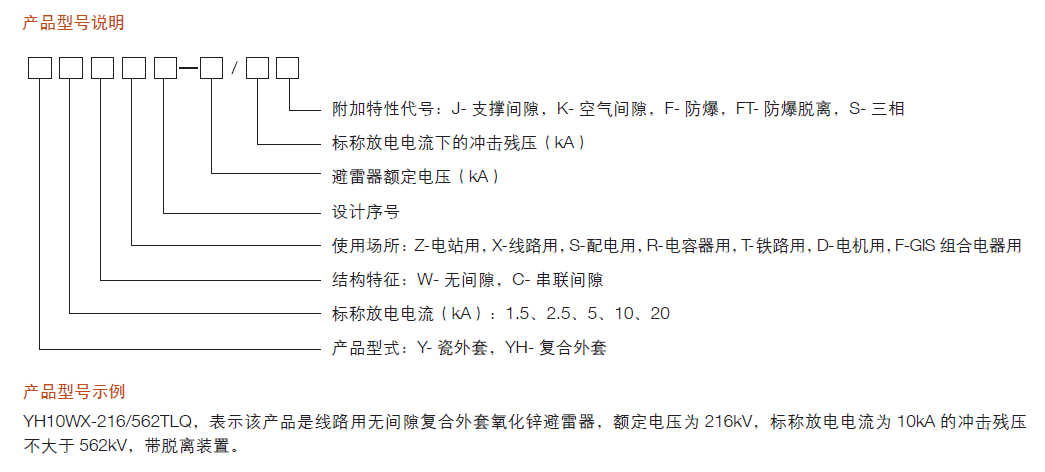
That is, the harm of lightning should be limited to the level of bronze thunder,
It can not affect the power system,
Nor damage the insulator string,
Therefore, the lightning arrester has the following characteristics:
① Installed in parallel on insulator strings,
Under normal operating voltage,
The arrester is in a high resistance insulation state,
Ensure that the wire is insulated from the ground.
② When the system endangers electrical equipment or
When the insulation of transmission line is over-voltage,
The lightning arrester is in the state of low resistance conduction,
The overvoltage is limited within the allowable range,
So as to protect the insulation of electrical equipment from damage,
Or avoid lightning flashover of transmission line insulator.
Zinc oxide arrester is a new type of arrester developed in the 1970s. It is mainly composed of zinc oxide varistors. Under the normal working voltage, the value of the varistor is very large, which is equivalent to the insulation state, but under the impact voltage, the varistor is broken down at a low value, which is equivalent to the short-circuit state. However, after the breakdown of the varistor, it can restore the insulation state. When the voltage higher than the varistor voltage is withdrawn, it returns to the high resistance state.
③ When the hazardous overvoltage is discharged to the ground,
The lightning arrester immediately restores the initial insulation state,
Cut off the synchronous power frequency freewheeling.
As can be seen from the above,
The circuit is not terrible,
Fast conduction can quickly discharge lightning current,
The terrible thing is that the conduction time is too long,
And form power frequency arc.
The zinc oxide arrester can discharge a large amount of lightning conduction current,
And can decisively cut off the arc,
Restore the high resistance state.
This is the core technology of lightning arrester.
so to speak,
Decisively and without hesitation,
It is the main feature of lightning arrester action.
Part 2
Line arrester
1. Naming rules for lightning arresters
give an example:
Yh5wx-51/134w commonly used in 35kV lines, lightning arrester for lines;
Yh10wz-102/266, commonly used in 110kV lines, is a lightning arrester for power stations.
2. Classification of arresters
1) Lightning arrester for power station
It is called lightning arrester for power station,
This is because this arrester was mainly used in substations,
Later, due to the popularity of cable lines,
This arrester is "transplanted" to the cable terminal tower,
Therefore, this kind of arrester is called "power station" arrester.
There is no series gap for the lightning arrester used in the power station.
For example, yh10wz-108/281 is shown in the following figure
▲ lightning arrester for power station
▲ lightning arrester for power station
2) Lightning arrester for line (support gap)
Lightning arresters for lines are common to us
Lightning arrester hung on the cross arm of the tower.
There are two kinds of lightning arresters for lines, one with gap and the other without gap,
Gap refers to the space distance between conductor and lightning arrester,
Lightning arresters with gaps are generally used for lines.
As shown in the product below:
"Support" means insulator support,
"Clearance" refers to the distance between two grading rings,
This ensures that the clearance value is constant and accurate.
For example, yh10cx1-180/520j is shown in the following figure
▲ lightning arrester for line (support gap)
3) Lightning arrester for line (air gap)
Air gap arresters do not rely on other means,
Instead, the distance between the arrester and the conductor is controlled during installation,
To control the gap.
For example, yh10cx2-192/560k is shown in the following figure
▲ lightning arrester for line (air gap)
4) Lightning arrester for line (without gap)
There is also no gap in the lightning arrester for the line,
As shown in the following figure,
Pay attention to the rod in the figure below,
It is this conductive rod that leads to the direct connection between the conductor and the lightning arrester,
So there is no gap.
For example, yh10wx-108/281 is shown in the following figure
▲ lightning arrester for line (without gap)
3. With or without clearance
What's the difference between having gaps or not?
Lightning arrester with gap,
Mainly to take advantage of the isolation effect of the gap,
During normal operation of the system,
The body is basically in a "resting" state,
Most of the power frequency voltage is borne by the series gap,
Due to the withstand characteristics of series gap to power frequency and switching overvoltage,
Under the action of power frequency and operating overvoltage,
The lightning arrester does not work,
Only under the action of lightning overvoltage,
The series gap breaks down and discharges,
Arrester action,
Lightning overvoltage is limited,
Thus, the protected line insulator (string) will not flashover,
And after the lightning impulse,
The series gap reliably cuts off the power frequency freewheeling,
The system resumes normal operation.
Why do many lines use lightning arresters with gaps?
Because first of all, the lightning arrester does not work most of the time,
Good durability.
Secondly, most of the routes are in high mountains,
And it is difficult to replace and maintain at high altitude,
With gap arrester, because of the existence of gap,
Even if the lightning arrester is broken,
The conductor is still insulated from the ground,
So there is no problem,
It's just no longer protected.
Therefore, it is also called maintenance free arrester.
See the following table for the detailed comparison between with clearance and without clearance:
